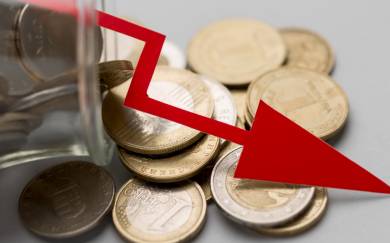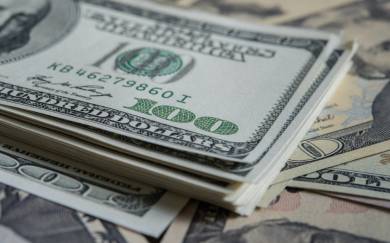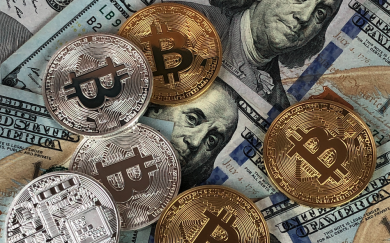Currency Speculators boost US Dollar Index bets to 5-year high while Euro bets dip into bearish level

Invest Macro 18.06.2022 20:13
By InvestMacro | COT | Data Tables | COT Leaders | Downloads | COT Newsletter
Here are the latest charts and statistics for the Commitment of Traders (COT) data published by the Commodities Futures Trading Commission (CFTC).
The latest COT data is updated through Tuesday June 14th and shows a quick view of how large traders (for-profit speculators and commercial entities) were positioned in the futures markets. All currency positions are in direct relation to the US dollar where, for example, a bet for the euro is a bet that the euro will rise versus the dollar while a bet against the euro will be a bet that the euro will decline versus the dollar.
There were many really large moves this week in the COT positioning as the data was recorded on Tuesday – just one day ahead of the Federal Reserve’s announcement of a 75 basis point increase in the US benchmark Fed Funds rate.
Currency market speculator bets were mostly higher this week as eight out of the eleven currency markets (Russian ruble futures positions have not been updated by the CFTC since March) we cover had higher positioning this week while two markets had lower contracts. Leading the gains for currency market positions was the Canadian dollar (24,264 contracts) and the Japanese yen (21,891 contracts) with the New Zealand dollar (12,933 contracts), Swiss franc (9,324 contracts), US Dollar Index (6,538 contracts), British pound sterling (5,214 contracts), Australian dollar (4,642 contracts), Bitcoin (571 contracts) and Brazil real (508 contracts) also showing positive weeks.
Meanwhile, leading the declines in speculator bets were the Mexican peso (-59,107 contracts) and the Euro (-56,561 contracts) this week.
Currency Speculators Notes:
US Dollar Index speculators raised their bullish bets for a second straight week this week and for the seventh time in the past ten weeks. These increases pushed the large speculator standing (+44,476 contracts) to the highest level in the past two hundred and seventy-three weeks, dating back more than five years to March 21st of 2017. The most bullish level ever was +81,270 contracts on March 10th of 2015. The US dollar strength keeps rolling along and the overall standing has now remained bullish for the past fifty consecutive weeks, dating back to July of 2021. The US Dollar Index price has continued its strength as well and reached a high this week of over 105.75 which is the best level for the DXY since back in December of 2002.
Euro speculators sharply dropped their positions this week by the most on record with a huge decline of -56,561 contracts. This record decline beat out the previous high of -52,107 contracts that took place on June 19th of 2018. Euro bets had been gaining over the past month and were at a total of +50,543 contracts before this week’s sharp turnaround which has now tipped the overall spec positioning into bearish territory for the first time since January.
Japanese yen speculator bets surged this week (+21,891 contracts) and gained for the fifth straight week. Yen speculator positions have been in bearish territory for over a year and have been extremely week since many central banks around the world started raising their interest rates. The Bank of Japan has not raised rates and has signaled that it will not do so, creating large interest rate differentials compared to the other major currencies. Despite the spec bets increase this week, the yen exchange rate came under further pressure this week with the USDJPY price closing over the 135.00 exchange rate (and remaining near 20-year highs).
Mexican Peso speculator bets fell sharply by -59,381 contracts this week and flipped the MXN speculator positioning from bullish to bearish. The weekly speculator decline is the largest fall in the past thirteen weeks and the decrease into a bearish standing is the first time since March 29th.
Canadian dollar bets jumped this week by the most in the past seventy-seven weeks and brought the speculator position back into bullish territory for the first time in six weeks. CAD speculator bets have now gained for four straight weeks and the overall spec standing is residing at the highest level since July 2021.
New Zealand dollar speculators also boosted their bets this week after the NZD positions had dropped in six out of the previous seven weeks. This week’s rise in weekly bets was the most in the past thirteen weeks but the overall speculator standing remains in bearish territory for the seventh straight week.
Strength scores (3-Year range of Speculator positions, from 0 to 100 where above 80 is extreme bullish and below 20 is extreme bearish) show that the US Dollar Index (100 percent), Bitcoin (100 percent) and the Brazilian Real (96.8 percent) are leading the strength scores and are all in extreme bullish positions. On the downside, the Mexican peso (16.1 percent) has fallen into extreme bearish positioning followed by the Japanese yen (25.9 percent) and British pound (26.7 percent) which are just above the 20 percent extreme bearish threshold.
Strength score trends (or move index, that calculate 6-week changes in strength scores) shows that the US Dollar Index (19.5 percent), Japanese yen (19.1 percent) and Swiss franc (18 percent) have the highest six-week trend scores currently. The Mexican peso also leads the trends on the downside with a -17.5 percent trend change.
Data Snapshot of Forex Market Traders | Columns Legend
Jun-14-2022
OI
OI-Index
Spec-Net
Spec-Index
Com-Net
COM-Index
Smalls-Net
Smalls-Index
USD Index
61,144
91
44,476
100
-47,736
0
3,260
52
EUR
668,164
69
-6,018
33
-28,495
68
34,513
32
GBP
238,322
63
-65,596
27
81,063
78
-15,467
24
JPY
232,513
77
-69,755
26
86,443
78
-16,688
20
CHF
39,362
20
-6,808
39
18,147
72
-11,339
19
CAD
175,219
47
23,202
65
-30,284
43
7,082
44
AUD
142,857
39
-43,254
45
44,710
52
-1,456
49
NZD
45,410
35
-6,838
60
9,773
45
-2,935
18
MXN
197,375
48
-26,381
16
23,148
82
3,233
57
RUB
20,930
4
7,543
31
-7,150
69
-393
24
BRL
69,931
67
47,213
97
-48,458
4
1,245
79
Bitcoin
12,242
68
1,061
100
-947
0
-114
10
US Dollar Index Futures:
The US Dollar Index large speculator standing this week resulted in a net position of 44,476 contracts in the data reported through Tuesday. This was a weekly boost of 6,538 contracts from the previous week which had a total of 37,938 net contracts.
This week’s current strength score (the trader positioning range over the past three years, measured from 0 to 100) shows the speculators are currently Bullish-Extreme with a score of 100.0 percent. The commercials are Bearish-Extreme with a score of 0.0 percent and the small traders (not shown in chart) are Bullish with a score of 52.2 percent.
US DOLLAR INDEX Statistics
SPECULATORS
COMMERCIALS
SMALL TRADERS
– Percent of Open Interest Longs:
86.9
2.9
9.1
– Percent of Open Interest Shorts:
14.2
80.9
3.8
– Net Position:
44,476
-47,736
3,260
– Gross Longs:
53,133
1,752
5,553
– Gross Shorts:
8,657
49,488
2,293
– Long to Short Ratio:
6.1 to 1
0.0 to 1
2.4 to 1
NET POSITION TREND:
– Strength Index Score (3 Year Range Pct):
100.0
0.0
52.2
– Strength Index Reading (3 Year Range):
Bullish-Extreme
Bearish-Extreme
Bullish
NET POSITION MOVEMENT INDEX:
– 6-Week Change in Strength Index:
19.2
-19.1
7.1
Euro Currency Futures:
The Euro Currency large speculator standing this week resulted in a net position of -6,018 contracts in the data reported through Tuesday. This was a weekly fall of -56,561 contracts from the previous week which had a total of 50,543 net contracts.
This week’s current strength score (the trader positioning range over the past three years, measured from 0 to 100) shows the speculators are currently Bearish with a score of 33.2 percent. The commercials are Bullish with a score of 67.9 percent and the small traders (not shown in chart) are Bearish with a score of 31.6 percent.
EURO Currency Statistics
SPECULATORS
COMMERCIALS
SMALL TRADERS
– Percent of Open Interest Longs:
31.0
54.1
12.7
– Percent of Open Interest Shorts:
31.9
58.3
7.5
– Net Position:
-6,018
-28,495
34,513
– Gross Longs:
206,986
361,159
84,823
– Gross Shorts:
213,004
389,654
50,310
– Long to Short Ratio:
1.0 to 1
0.9 to 1
1.7 to 1
NET POSITION TREND:
– Strength Index Score (3 Year Range Pct):
33.2
67.9
31.6
– Strength Index Reading (3 Year Range):
Bearish
Bullish
Bearish
NET POSITION MOVEMENT INDEX:
– 6-Week Change in Strength Index:
0.1
-1.1
5.9
British Pound Sterling Futures:
The British Pound Sterling large speculator standing this week resulted in a net position of -65,596 contracts in the data reported through Tuesday. This was a weekly lift of 5,214 contracts from the previous week which had a total of -70,810 net contracts.
This week’s current strength score (the trader positioning range over the past three years, measured from 0 to 100) shows the speculators are currently Bearish with a score of 26.7 percent. The commercials are Bullish with a score of 77.6 percent and the small traders (not shown in chart) are Bearish with a score of 23.6 percent.
BRITISH POUND Statistics
SPECULATORS
COMMERCIALS
SMALL TRADERS
– Percent of Open Interest Longs:
12.3
77.2
8.7
– Percent of Open Interest Shorts:
39.8
43.2
15.1
– Net Position:
-65,596
81,063
-15,467
– Gross Longs:
29,343
184,011
20,625
– Gross Shorts:
94,939
102,948
36,092
– Long to Short Ratio:
0.3 to 1
1.8 to 1
0.6 to 1
NET POSITION TREND:
– Strength Index Score (3 Year Range Pct):
26.7
77.6
23.6
– Strength Index Reading (3 Year Range):
Bearish
Bullish
Bearish
NET POSITION MOVEMENT INDEX:
– 6-Week Change in Strength Index:
5.9
-4.7
-0.5
Japanese Yen Futures:
The Japanese Yen large speculator standing this week resulted in a net position of -69,755 contracts in the data reported through Tuesday. This was a weekly boost of 21,891 contracts from the previous week which had a total of -91,646 net contracts.
This week’s current strength score (the trader positioning range over the past three years, measured from 0 to 100) shows the speculators are currently Bearish with a score of 25.9 percent. The commercials are Bullish with a score of 77.8 percent and the small traders (not shown in chart) are Bearish-Extreme with a score of 19.5 percent.
JAPANESE YEN Statistics
SPECULATORS
COMMERCIALS
SMALL TRADERS
– Percent of Open Interest Longs:
14.0
75.6
9.6
– Percent of Open Interest Shorts:
44.0
38.4
16.8
– Net Position:
-69,755
86,443
-16,688
– Gross Longs:
32,441
175,789
22,340
– Gross Shorts:
102,196
89,346
39,028
– Long to Short Ratio:
0.3 to 1
2.0 to 1
0.6 to 1
NET POSITION TREND:
– Strength Index Score (3 Year Range Pct):
25.9
77.8
19.5
– Strength Index Reading (3 Year Range):
Bearish
Bullish
Bearish-Extreme
NET POSITION MOVEMENT INDEX:
– 6-Week Change in Strength Index:
19.1
-16.5
5.7
Swiss Franc Futures:
The Swiss Franc large speculator standing this week resulted in a net position of -6,808 contracts in the data reported through Tuesday. This was a weekly lift of 9,324 contracts from the previous week which had a total of -16,132 net contracts.
This week’s current strength score (the trader positioning range over the past three years, measured from 0 to 100) shows the speculators are currently Bearish with a score of 39.2 percent. The commercials are Bullish with a score of 72.4 percent and the small traders (not shown in chart) are Bearish-Extreme with a score of 19.1 percent.
SWISS FRANC Statistics
SPECULATORS
COMMERCIALS
SMALL TRADERS
– Percent of Open Interest Longs:
10.9
66.2
22.9
– Percent of Open Interest Shorts:
28.2
20.1
51.7
– Net Position:
-6,808
18,147
-11,339
– Gross Longs:
4,291
26,045
9,026
– Gross Shorts:
11,099
7,898
20,365
– Long to Short Ratio:
0.4 to 1
3.3 to 1
0.4 to 1
NET POSITION TREND:
– Strength Index Score (3 Year Range Pct):
39.2
72.4
19.1
– Strength Index Reading (3 Year Range):
Bearish
Bullish
Bearish-Extreme
NET POSITION MOVEMENT INDEX:
– 6-Week Change in Strength Index:
18.0
-19.8
17.9
Canadian Dollar Futures:
The Canadian Dollar large speculator standing this week resulted in a net position of 23,202 contracts in the data reported through Tuesday. This was a weekly boost of 24,264 contracts from the previous week which had a total of -1,062 net contracts.
This week’s current strength score (the trader positioning range over the past three years, measured from 0 to 100) shows the speculators are currently Bullish with a score of 65.4 percent. The commercials are Bearish with a score of 43.5 percent and the small traders (not shown in chart) are Bearish with a score of 44.3 percent.
CANADIAN DOLLAR Statistics
SPECULATORS
COMMERCIALS
SMALL TRADERS
– Percent of Open Interest Longs:
32.3
45.1
16.8
– Percent of Open Interest Shorts:
19.0
62.4
12.7
– Net Position:
23,202
-30,284
7,082
– Gross Longs:
56,550
79,064
29,357
– Gross Shorts:
33,348
109,348
22,275
– Long to Short Ratio:
1.7 to 1
0.7 to 1
1.3 to 1
NET POSITION TREND:
– Strength Index Score (3 Year Range Pct):
65.4
43.5
44.3
– Strength Index Reading (3 Year Range):
Bullish
Bearish
Bearish
NET POSITION MOVEMENT INDEX:
– 6-Week Change in Strength Index:
15.9
-14.4
6.3
Australian Dollar Futures:
The Australian Dollar large speculator standing this week resulted in a net position of -43,254 contracts in the data reported through Tuesday. This was a weekly lift of 4,642 contracts from the previous week which had a total of -47,896 net contracts.
This week’s current strength score (the trader positioning range over the past three years, measured from 0 to 100) shows the speculators are currently Bearish with a score of 44.7 percent. The commercials are Bullish with a score of 52.2 percent and the small traders (not shown in chart) are Bearish with a score of 48.9 percent.
AUSTRALIAN DOLLAR Statistics
SPECULATORS
COMMERCIALS
SMALL TRADERS
– Percent of Open Interest Longs:
22.2
59.9
14.9
– Percent of Open Interest Shorts:
52.4
28.6
16.0
– Net Position:
-43,254
44,710
-1,456
– Gross Longs:
31,660
85,591
21,342
– Gross Shorts:
74,914
40,881
22,798
– Long to Short Ratio:
0.4 to 1
2.1 to 1
0.9 to 1
NET POSITION TREND:
– Strength Index Score (3 Year Range Pct):
44.7
52.2
48.9
– Strength Index Reading (3 Year Range):
Bearish
Bullish
Bearish
NET POSITION MOVEMENT INDEX:
– 6-Week Change in Strength Index:
-13.7
7.8
10.4
New Zealand Dollar Futures:
The New Zealand Dollar large speculator standing this week resulted in a net position of -6,838 contracts in the data reported through Tuesday. This was a weekly increase of 12,933 contracts from the previous week which had a total of -19,771 net contracts.
This week’s current strength score (the trader positioning range over the past three years, measured from 0 to 100) shows the speculators are currently Bullish with a score of 59.8 percent. The commercials are Bearish with a score of 45.5 percent and the small traders (not shown in chart) are Bearish-Extreme with a score of 18.2 percent.
NEW ZEALAND DOLLAR Statistics
SPECULATORS
COMMERCIALS
SMALL TRADERS
– Percent of Open Interest Longs:
32.8
61.8
4.9
– Percent of Open Interest Shorts:
47.9
40.3
11.4
– Net Position:
-6,838
9,773
-2,935
– Gross Longs:
14,894
28,062
2,236
– Gross Shorts:
21,732
18,289
5,171
– Long to Short Ratio:
0.7 to 1
1.5 to 1
0.4 to 1
NET POSITION TREND:
– Strength Index Score (3 Year Range Pct):
59.8
45.5
18.2
– Strength Index Reading (3 Year Range):
Bullish
Bearish
Bearish-Extreme
NET POSITION MOVEMENT INDEX:
– 6-Week Change in Strength Index:
-0.4
-0.2
3.8
Mexican Peso Futures:
The Mexican Peso large speculator standing this week resulted in a net position of -26,381 contracts in the data reported through Tuesday. This was a weekly reduction of -59,107 contracts from the previous week which had a total of 32,726 net contracts.
This week’s current strength score (the trader positioning range over the past three years, measured from 0 to 100) shows the speculators are currently Bearish-Extreme with a score of 16.1 percent. The commercials are Bullish-Extreme with a score of 82.5 percent and the small traders (not shown in chart) are Bullish with a score of 56.7 percent.
MEXICAN PESO Statistics
SPECULATORS
COMMERCIALS
SMALL TRADERS
– Percent of Open Interest Longs:
57.8
38.3
3.1
– Percent of Open Interest Shorts:
71.2
26.5
1.5
– Net Position:
-26,381
23,148
3,233
– Gross Longs:
114,093
75,532
6,170
– Gross Shorts:
140,474
52,384
2,937
– Long to Short Ratio:
0.8 to 1
1.4 to 1
2.1 to 1
NET POSITION TREND:
– Strength Index Score (3 Year Range Pct):
16.1
82.5
56.7
– Strength Index Reading (3 Year Range):
Bearish-Extreme
Bullish-Extreme
Bullish
NET POSITION MOVEMENT INDEX:
– 6-Week Change in Strength Index:
-17.5
17.4
-2.9
Brazilian Real Futures:
The Brazilian Real large speculator standing this week resulted in a net position of 47,213 contracts in the data reported through Tuesday. This was a weekly rise of 508 contracts from the previous week which had a total of 46,705 net contracts.
This week’s current strength score (the trader positioning range over the past three years, measured from 0 to 100) shows the speculators are currently Bullish-Extreme with a score of 96.8 percent. The commercials are Bearish-Extreme with a score of 4.0 percent and the small traders (not shown in chart) are Bullish with a score of 79.4 percent.
BRAZIL REAL Statistics
SPECULATORS
COMMERCIALS
SMALL TRADERS
– Percent of Open Interest Longs:
83.0
12.5
4.6
– Percent of Open Interest Shorts:
15.5
81.8
2.8
– Net Position:
47,213
-48,458
1,245
– Gross Longs:
58,023
8,711
3,197
– Gross Shorts:
10,810
57,169
1,952
– Long to Short Ratio:
5.4 to 1
0.2 to 1
1.6 to 1
NET POSITION TREND:
– Strength Index Score (3 Year Range Pct):
96.8
4.0
79.4
– Strength Index Reading (3 Year Range):
Bullish-Extreme
Bearish-Extreme
Bullish
NET POSITION MOVEMENT INDEX:
– 6-Week Change in Strength Index:
5.3
-5.0
-4.0
Bitcoin Futures:
The Bitcoin large speculator standing this week resulted in a net position of 1,061 contracts in the data reported through Tuesday. This was a weekly increase of 571 contracts from the previous week which had a total of 490 net contracts.
This week’s current strength score (the trader positioning range over the past three years, measured from 0 to 100) shows the speculators are currently Bullish-Extreme with a score of 100.0 percent. The commercials are Bearish-Extreme with a score of 0.0 percent and the small traders (not shown in chart) are Bearish-Extreme with a score of 10.3 percent.
BITCOIN Statistics
SPECULATORS
COMMERCIALS
SMALL TRADERS
– Percent of Open Interest Longs:
81.7
0.5
8.2
– Percent of Open Interest Shorts:
73.0
8.2
9.2
– Net Position:
1,061
-947
-114
– Gross Longs:
9,996
62
1,008
– Gross Shorts:
8,935
1,009
1,122
– Long to Short Ratio:
1.1 to 1
0.1 to 1
0.9 to 1
NET POSITION TREND:
– Strength Index Score (3 Year Range Pct):
100.0
0.0
10.3
– Strength Index Reading (3 Year Range):
Bullish-Extreme
Bearish-Extreme
Bearish-Extreme
NET POSITION MOVEMENT INDEX:
– 6-Week Change in Strength Index:
12.3
-30.9
-3.5
Article By InvestMacro – Receive our weekly COT Reports by Email
*COT Report: The COT data, released weekly to the public each Friday, is updated through the most recent Tuesday (data is 3 days old) and shows a quick view of how large speculators or non-commercials (for-profit traders) were positioned in the futures markets.
The CFTC categorizes trader positions according to commercial hedgers (traders who use futures contracts for hedging as part of the business), non-commercials (large traders who speculate to realize trading profits) and nonreportable traders (usually small traders/speculators) as well as their open interest (contracts open in the market at time of reporting).See CFTC criteria here.








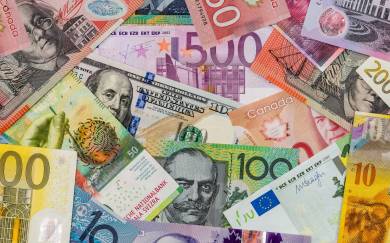







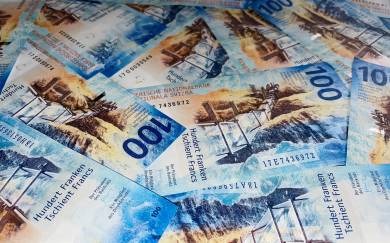
























































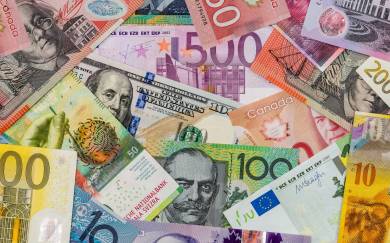

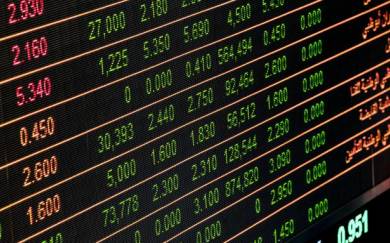





 Mikołaj Marcinowski 10.03.2022 14:39
Mikołaj Marcinowski 10.03.2022 14:39






























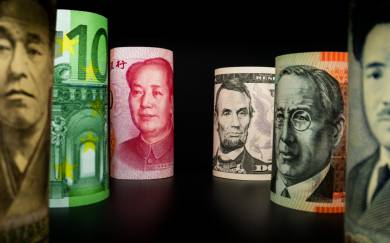


 Saxo Bank 19.04.2022 12:06
Saxo Bank 19.04.2022 12:06






 Jeffrey Halley 23.05.2022 12:52
Jeffrey Halley 23.05.2022 12:52



 TeleTrade Comments 14.09.2022 14:25
TeleTrade Comments 14.09.2022 14:25


 InstaForex Analysis 14.12.2022 08:11
InstaForex Analysis 14.12.2022 08:11
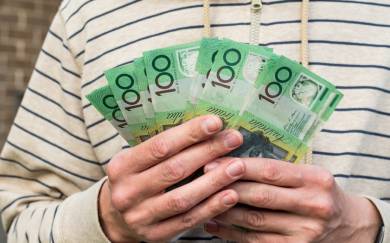
 Kamila Szypuła 14.12.2022 14:08
Kamila Szypuła 14.12.2022 14:08
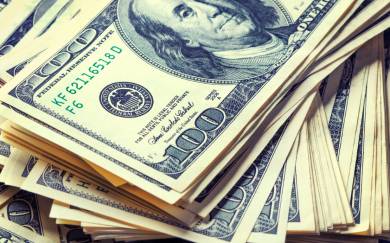



 ING Economics 19.12.2022 08:54
ING Economics 19.12.2022 08:54



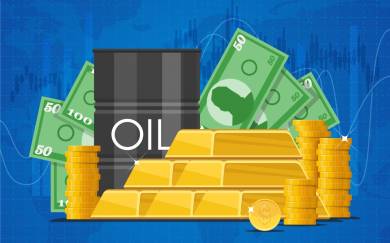
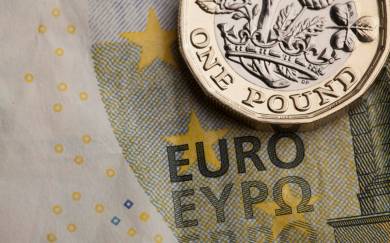

 Oscar Ton 28.12.2022 08:15
Oscar Ton 28.12.2022 08:15




 XTB Team 30.12.2022 13:01
XTB Team 30.12.2022 13:01





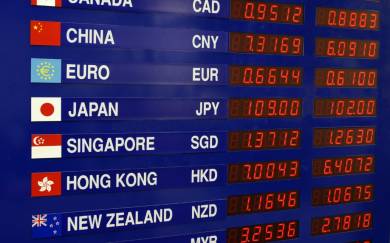


 Marek Petkovich 04.01.2023 13:10
Marek Petkovich 04.01.2023 13:10


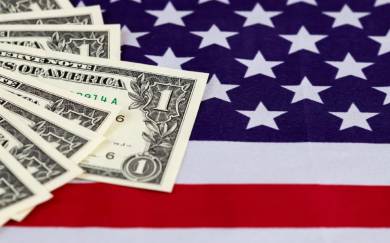
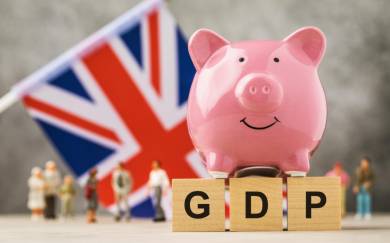

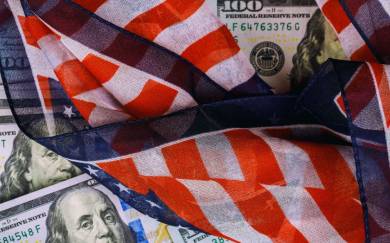




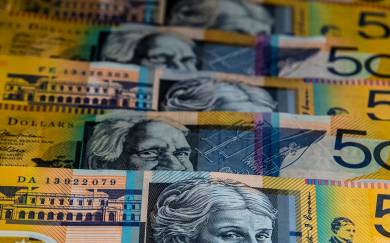




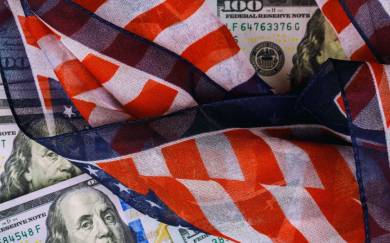


 Conotoxia Comments 03.02.2023 13:19
Conotoxia Comments 03.02.2023 13:19

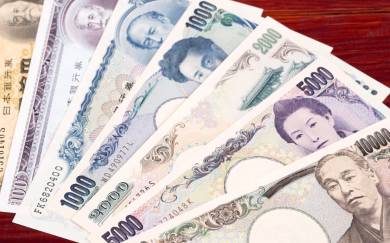

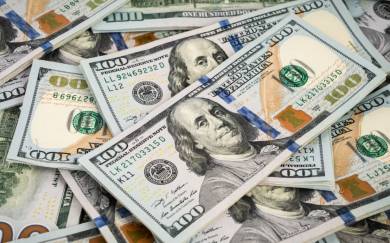
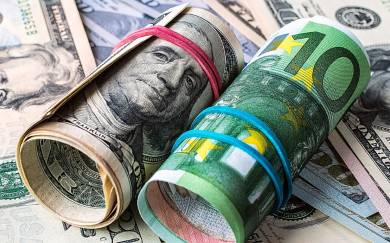

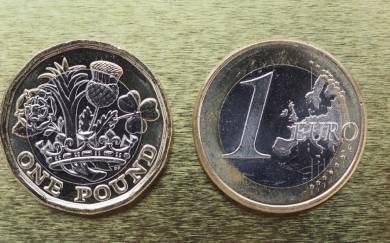

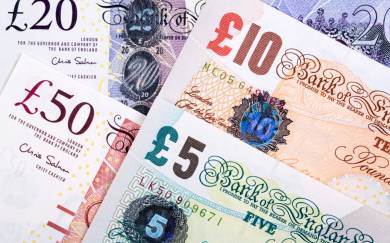








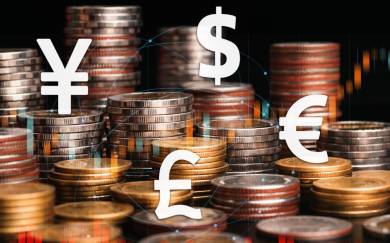










 Franklin Templeton 08.03.2023 10:45
Franklin Templeton 08.03.2023 10:45
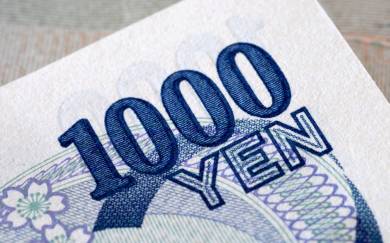

 Ed Moya 11.03.2023 10:08
Ed Moya 11.03.2023 10:08
 Kenny Fisher 14.03.2023 14:27
Kenny Fisher 14.03.2023 14:27





